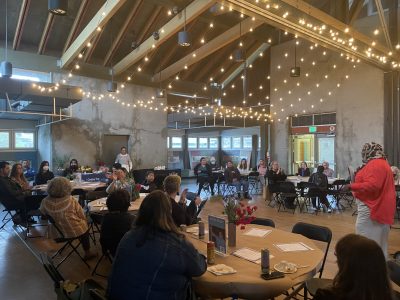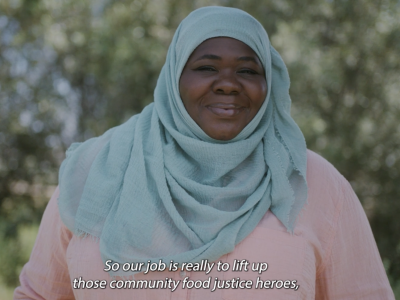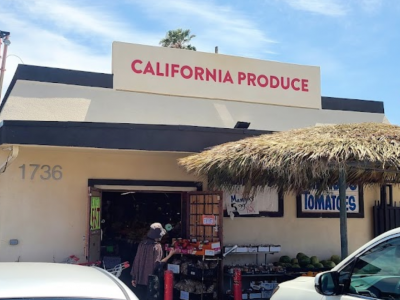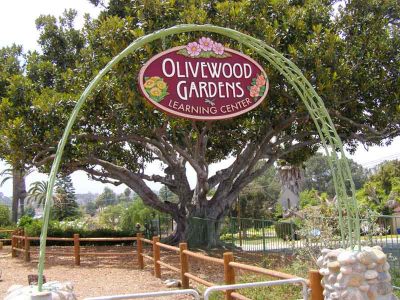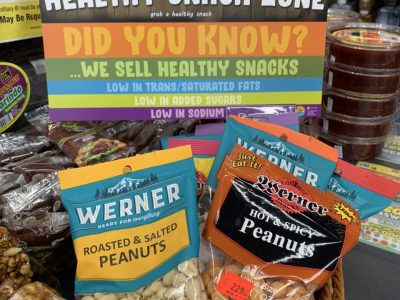
Challenge
Only 20% of residents live within one half-mile of a supermarket or large grocery store in the Southeastern San Diego neighborhood of Encanto, where two of our Live Well Community Market Program markets are located (USDA Food Access Research Atlas, 2015. Accessed via the California Healthy Places Index, 2021). This neighborhood deficit, in conjunction with critical systemic and historical social inequities, puts low-income communities of color like Encanto at higher risk for obesity, diabetes, and food insecurity. That said, lack of access to healthy affordable food is a markedly deeper and more complex challenge than a built environment “grocery gap” and illustrates what well-known food justice activist Karen Washington refers to as “food apartheid”.
Intervention
Our Urban Food Equity team pilot-tested a Healthy Snack Zone intervention at five community markets participating in our 2021 cohort of the Live Well Community Market Program.
Small neighborhood markets and corner stores, on the other hand, are valuable community assets that can contribute to an improved and more equitable food shopping experience for residents because many of these retailers stock fresh produce, healthy snacks, and staple food items. The Urban Food Equity team aims to support small markets by assisting them with strategic interventions and services outlined in the Live Well Community Market Program Recognition Framework, to benefit the health and well-being of their shoppers. Healthy snack zones are one identified intervention in the framework that helps advance a market towards Level 2 of the three-tiered program, and thus helps shoppers more easily identify and choose healthier snack options.
Community Food Specialist Nghi Dang and intern Rodrigo Alvarez led the collaboration with five market owners and/or managers to assess their desire to pilot test healthy snack zones and made a goal for each market to independently sustain the zones with provided technical assistance and resources.
First, cash register counter areas were identified as most optimal for high-foot traffic and to compete with other, more traditional impulse-buying products. Most market owners and managers were reluctant to completely remove unhealthy high-profit margin products from register areas; however, all were willing to clear enough space to display and merchandise a new healthy snack zone basket.
Next, we searched the aisles of each market to identify healthy snacks already stocked. Snacks were qualified as “healthy” using previously developed and approved guidelines with support from a registered dietitian (LWCMP Healthy Snacks Guidelines, 2019). Best choices for healthy snacks are whole, unprocessed foods. If a snack is processed or packaged, fewer ingredients that are also recognizable to the shopper and eater is the better choice. Processed and packaged snacks must also meet additional criteria in the guidelines.
Finally, market owners/managers were provided baskets, healthy snack stickers and signs in English and Spanish, suggested lists of stocked healthy snacks, price cards, and other supportive point-of-sale materials to set-up and maintain their new healthy snack zones. Customized training on the snack guidelines, monitoring and restocking tips, and ongoing progress checks were offered as well.

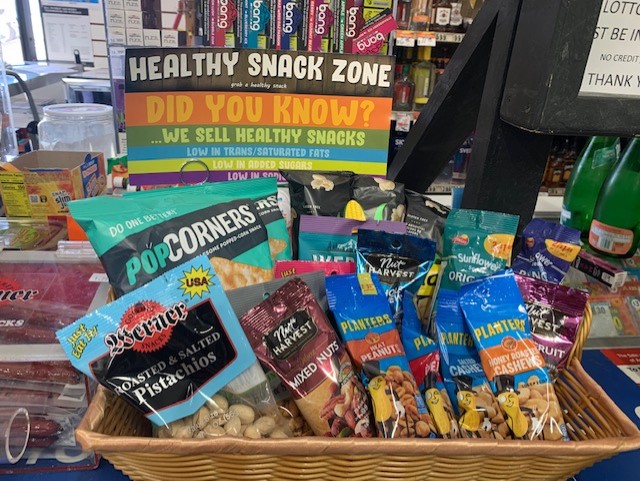
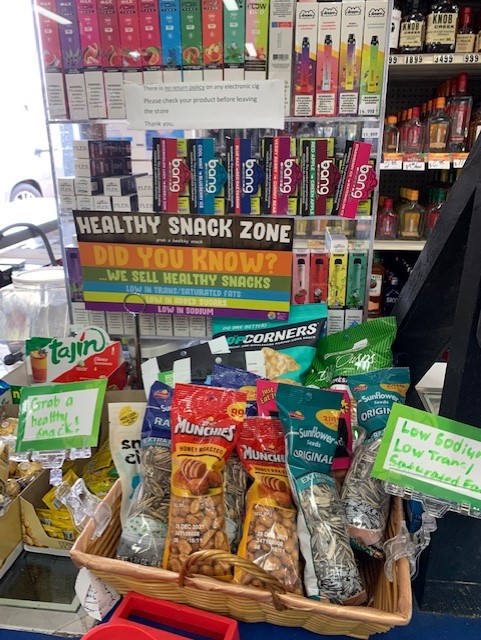
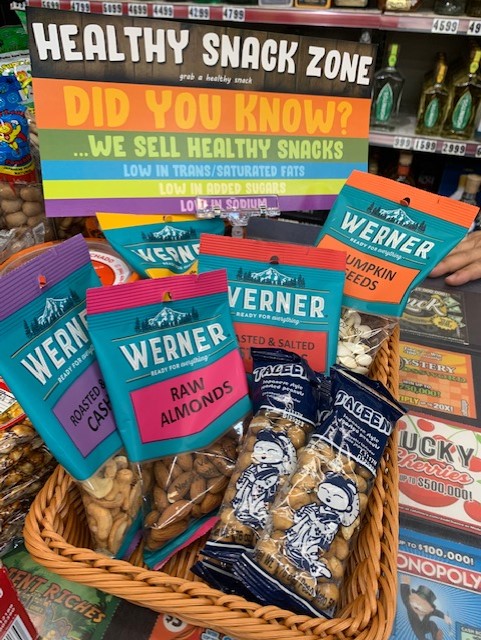
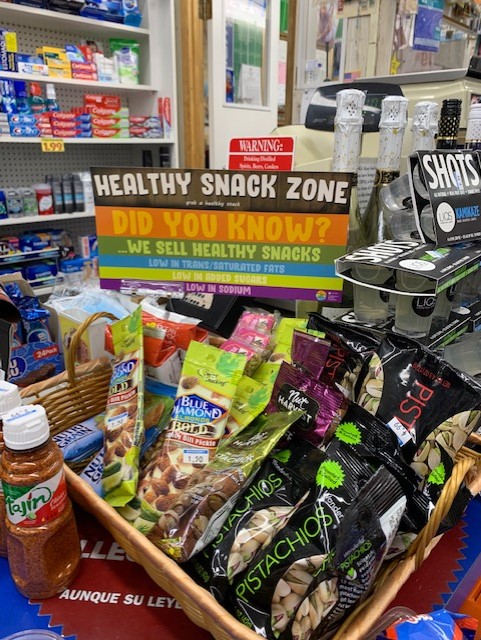
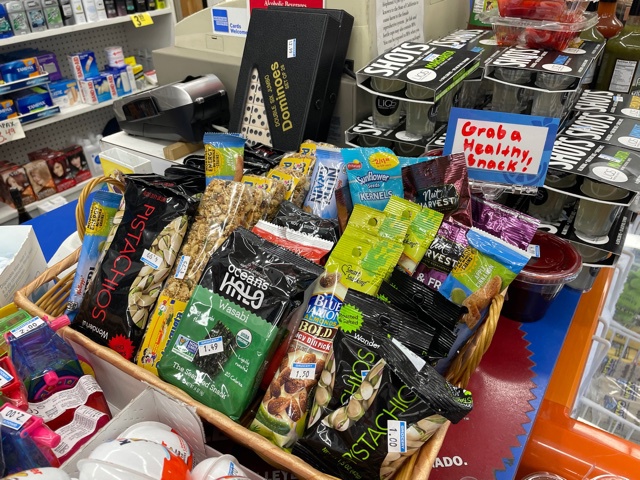
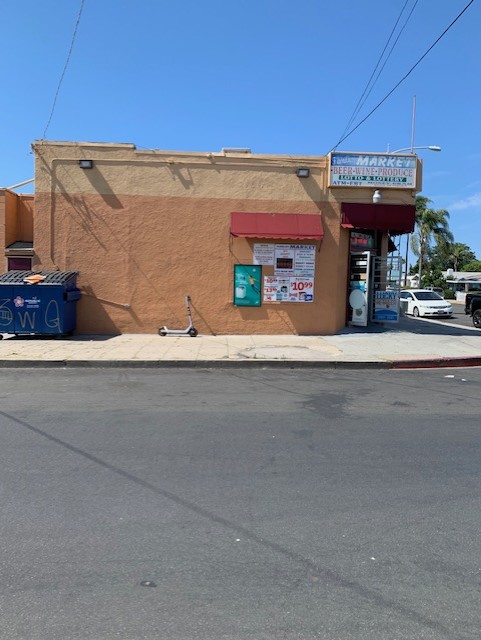
Sustaining Success
In addition to ongoing progress checks to monitor healthy snack sales, market owners/managers were offered more merchandising materials such as price cards, sign holders, and stickers to continue rotating in new snack inventory that meets guidelines. One of the five markets chose not to sustain their healthy snack zone after a three-month pilot period revealing no uptick in healthy snack purchases. That market instead chose to focus their efforts on improving their produce display case.
Four of five markets continue to stock and maintain their healthy snack zones, with one in particular reporting enthusiasm and appreciation for the 10-12% sales increase in snack products displayed in the healthy snack zone. Art, the owner of Families Market located in City Heights, San Diego, said, “This snack zone is great for promoting healthy snacks in our neighborhood. We definitely will keep and maintain this since it is making a difference.”
We will continue to provide technical support to aid community markets in promoting healthier food choices. We also trained and provided resources to four agencies that implement the Live Well Community Market Program, funded by the County of San Diego Health & Human Services Agency’s Tobacco Control efforts, to pilot test healthy snack zones at up to six new markets across San Diego County. Additionally, when safe and practical to do so given the ongoing public health pandemic, the team plans to conduct shopper surveys and product taste testing to better inform healthy snack interventions.

